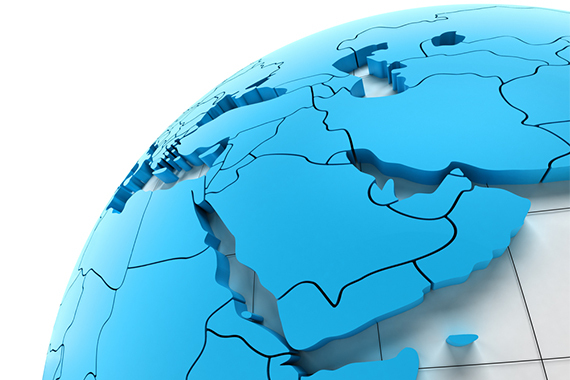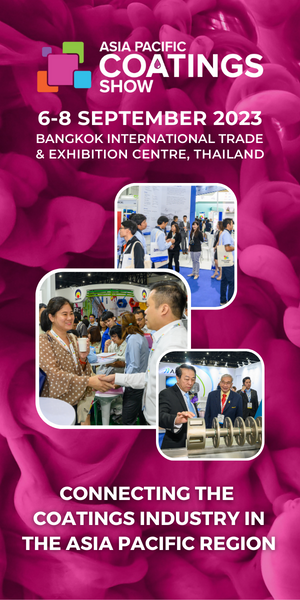
By Paul Cochrane
The paint markets of the Gulf region’s two largest economies, Saudi Arabia and the United Arab Emirates (UAE), have rebounded since the COVID-19 pandemic and are slated for growth, driven by major investments in real estate and infrastructure projects.
“Over the past 18 months, we have seen a flat and slightly declining paint market in the region. The general trend indicates, however, that markets in the region have been recovering since COVID-19,” said Steen Niemann Madsen, Executive Vice President, Head of Energy and Infrastructure at Hempel, in Denmark.
Construction projects driving market
While demand for paints for new buildings and maintenance has buoyed sales, it is new construction projects that are expected to drive the market going forward. Saudi Arabia is the Middle East and North Africa leader in construction projects, with 35% market share, with US$31bn in awarded contracts, as of October 2022, according to figures from MEED Projects, a project tracking and analysis platform.
Under Saudi Arabia’s Vision 2030 strategy to diversify its economy away from hydrocarbons, Riyadh is investing heavily in a slew of projects. The kingdom’s National Industrial Strategy is to invest Saudi Arabian Riyals SAR1.3trn riyals (US$346bn) in the industrial sector in the coming years, with 800 industrial projects valued at SAR1trn (US$266bn) to be announced in 2023, reported Arabic language Saudi newspaper Al Madina.
In January (2022), at the Real Estate Future Forum, staged in Riyadh, agreements worth more than SAR10bn (US$2.66bn) were signed to set up investment funds to develop commercial, tourism and residential projects, reported daily Asharq Al-Awsat, another Saudi Arabic language newspaper.
Such investments are the beginning, with global ratings agency S&P Global Ratings estimating that US$1trn will be invested in real estate and infrastructure projects in the kingdom, driven by Vision 2030. Some eight new cities are planned to be built, mostly on the Red Sea coast, with more than 1.3M new homes by 2030. Developments include the US$8bn Qiddiya project, the 30,000m2 Red Sea project and the US$4.4bn Jabal Omar project outside the holy city of Mecca.
Major projects are also planned for the capital Riyadh, with its population projected to grow from 7.5M to 17M by 2030, according to real estate consultancy Knight Frank. Some US$104bn in real estate projects have been announced over the last six years, including the US$2.7bn Al Widyan project and the US$20bn Diriyah Gate, which is to include 20,000 homes, and for which infrastructure development started in 2021. All these projects will entail the purchase of significant volumes of paint and coatings.
This is especially the case should the projected US$500bn Neom project, on Saudi Arabia’s northern Red Sea coast, come to fruition. This includes ambitious plans to build ‘The Line’, a 170 kilometre-long megacity that is to house nine million people. Some US$319bn has been earmarked for the first stage of the project, which – like other such Saudi mega projects has the political support of the country’s de-facto ruling Crown Prince Mohammed bin Salman.
“Saudi Arabia’s Vision 2030 and Neom projects, including The Line, present a host of opportunities for global coatings companies across a range of segments,” said Madsen.
That said, most associated paint and coatings orders have yet to be made. While groundwork has started on the project, like other developments announced, this has not yet translated into any significant paint tenders: “It is still too soon to see the impact of Saudi Arabia’s upcoming giga projects on paint sales at this early stage of the build,” said Madsen.
The same applies to major transportation and energy projects. The kingdom is slated to invest US$133.3bn in airports, ports, rail and other infrastructure by 2030, according to the transport and logistic services ministry.
The anticipated boom in the national construction sector is slated to drive the value of the country’s paints and coatings market from US$8.7bn in 2019 to reach US$13.4bn by 2027, with an estimated compound annual growth rate (CAGR) of 7.3% between 2020 and 2027, according to a report by US-based Allied Market Research. India-based Mordor Intelligence however is less optimistic, estimating a CAGR of 3% between 2021-2027. Major sector players are Jordan-based National Paints Factories Co Ltd; Norway’s Jotun; PPG-owned Sigma; the Netherlands’ AkzoNobel; and Saudi Arabia-based Jazeera Paints, according to Mordor Intelligence.
While there have been no major investments in increasing Saudi production capacity among these major paint companies, Jazeera, which produces more than 400,000 tonnes-a-year, has opened new showrooms this year, with more than 650 showrooms inside and outside the country, according to Saudi press reports.
For information on the upcoming Saudi Arabia Coatings Show, click here.
Rebound in real estate activity boosts UAE paint sector
In the UAE, which has in the past been the Gulf region’s construction hub, the paint sector has been bolstered by a rebound in real estate activity, particularly in Dubai. This Emirate recorded UAE Dirhams AED528bn (US$143bn) in real estate transactions in 2022, up 76.5% on 2021, with 86,000 sales, according to Bloomberg. Such growth has been driven by post-COVID-19 investment and wealthy investors seeking safe havens, with Russians worried about the impact of international sanctions following their country’s bloody and destructive invasion of Ukraine, being the largest international buyers.
The UAE’s construction and infrastructure industry was estimated to be worth US$40.1bn in 2022, according to Fitch Solutions. Some 55 projects worth US$3.2bn were completed last year, while a further 350 real estate projects are currently being developed, including Dubai Islands, the World Islands, and the Uptown Tower district, according to the Dubai government media office.
Such growth is driving sales of decorative paints in the UAE, with a retail value estimated at US$2.17bn in 2021, US$2.26bn in 2022, US$2.33bn in 2023, and US$2.44bn in 2024, according to London-based market researcher Euromonitor International.
To meet anticipated growth in the UAE and the wider Gulf region, Norway’s Jotun invested US$40.8M in a 23,000m2 facility, which includes a research and development wing, in Dubai Science Park, that opened in January.
Innovative and sustainable technologies leading the way in the UAE
Innovative technologies are also being adopted in the UAE. Dubai has set a goal to achieve 25% of total construction through 3D printing by 2030. Paint companies are working to evaluate the compatibility of decorative paints on concrete used in 3D printing, according to Jotun.
In 2022, UAE-based developed Emaar Properties contracted Dubai-based Myro International to use its mobile intelligent paint robot (MYRO) to paint a high-rise residential project in the Emirate. Being used as a trial, the technology can paint nearly 1000ft2 in an hour, around 10 times faster than manual painting, reported Arabian Business, a Dubai-based business newspaper.
“As well as delivering cost savings such tech can deliver sustainability benefits such as less wastage, and as well as diversifying away from reliance on hydrocarbons, Gulf governments, business and consumers are increasingly interested in environmental performance – with eco-friendly paints growing in popularity,” said Madsen. “Many clients are now insisting on measuring sustainability credentials with construction to best-in-class environmental credentials, such as BREEAM or LEED,” he said, stressing that the upcoming boom in Gulf coatings sales will be about quality as well as quantity.




